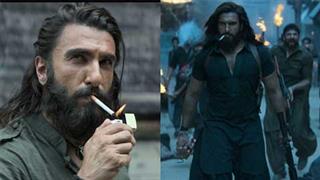Cinema Modern: The Navketan Story
By: Sidharth Bhatia.
Cover Price: Rs. 1999.00
Format: Hardback; 180 pages
With memories getting short, growing indifference to the past and impatience with nostalgia, a lot of young movie buffs probably don't know about Dev Anand's glory days.
They saw his newer films, which were between bizarre, ridiculous and plain ghastly; TV mimics had turned him into a caricature and his own autobiography did not do him complete justice.
It was very important to remember and record the wonders that he achieved as a producer, under his banner Navketan, which survived all ups and downs in his fortunes and is one of the longest lasting independent film companies in the world.
So, Sidharth Bhatia has done the world of movies a great favour by writing Cinema Modern: The Navketan Story that chronicles the wonder years of the production company Dev Anand set up, very early in his career.
The title, Cinema Modern, is so apt because what Dev and his associates - brothers Chetan and Vijay, Guru Dutt, Raj Khosla - did, was weave movie magic with an oeuvre of films that were audacious, artistic, trend-setting and yes, modern.
Dev and Chetan Anand established Navketan in 1949, bringing a fresh style and progressive urban sensibility to Hindi (and Indian) movies.
Bhatia was lucky in that Dev Anand was not just a great raconteur, but had a memory that could recall facts and details with astonishing accuracy.
Dev Anand, quite literally, never forgot anything, and somewhere down the hierarchy of his company, prints, photos and memorabilia were carefully preserved, in spite of shifts in location.
Mercifully, Bhatia has not turned the book boringly academic, but written in a style that's informative and breezy without being lightweight or fawning.
It is the work of a journalist, not a scholar or fan, which is a good thing. Dev Anand's aura was such that it charmed the worst critics, but it was as difficult to praise his post-'70s films, as it was to find fault in Navketan's best films like the early noir-ish film like Baazi and Taxi Driver to the classic Guide and Hare Rama Hare Krishna, that caught the pulse of the hippie generation. Plus there was the great music SD and RD Burman that has to be heard, it can't just be read about.
 For those who knew Navketan films, there are no surprises; over a long and very eventful career, pretty much everything Dev
Anand wanted revealed was out in print. It's all there, in neatly divided chapters the shaky beginning of Navketan with the flop
Afsar, the successes, failure, highs, lows, the friendships, the parting of ways.
For those who knew Navketan films, there are no surprises; over a long and very eventful career, pretty much everything Dev
Anand wanted revealed was out in print. It's all there, in neatly divided chapters the shaky beginning of Navketan with the flop
Afsar, the successes, failure, highs, lows, the friendships, the parting of ways.The most interesting, as was to be expected, are the chapters on the making of Guide and Hare Rama Hare Krishna - these two were undoubtedly game changers of their time, and both with very bold female characters. If the initial stunned response to Guide finds a lot of space, so does the discovery and grooming of Zeenat Aman.
Bhatia has got down a lot of lovely anecdotes, and lot of pictures and stills. Even though the quality of the printing is not so good (with computers, any old photos can be restored), they are well chosen and a rich visual history of the cinema made over half a century and more.
It's a pity, Dev Anand's films went into a downward spin after Loot Maar; that does not take away from the achievements of Navketan or Dev Anand's iconic stardom. This book was overdue, and then came out at just the right time, when the evergreen hero passed away suddenly.

















